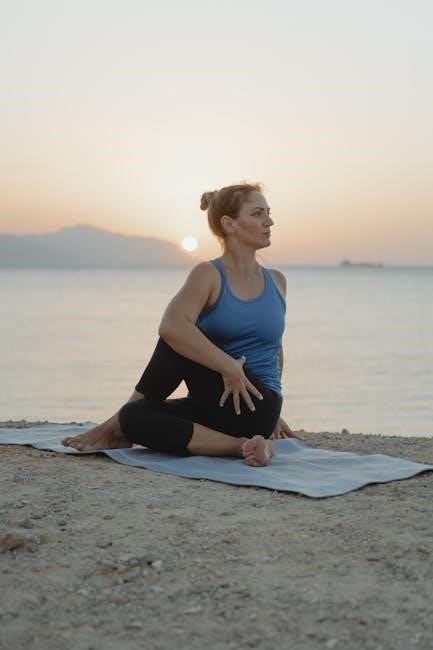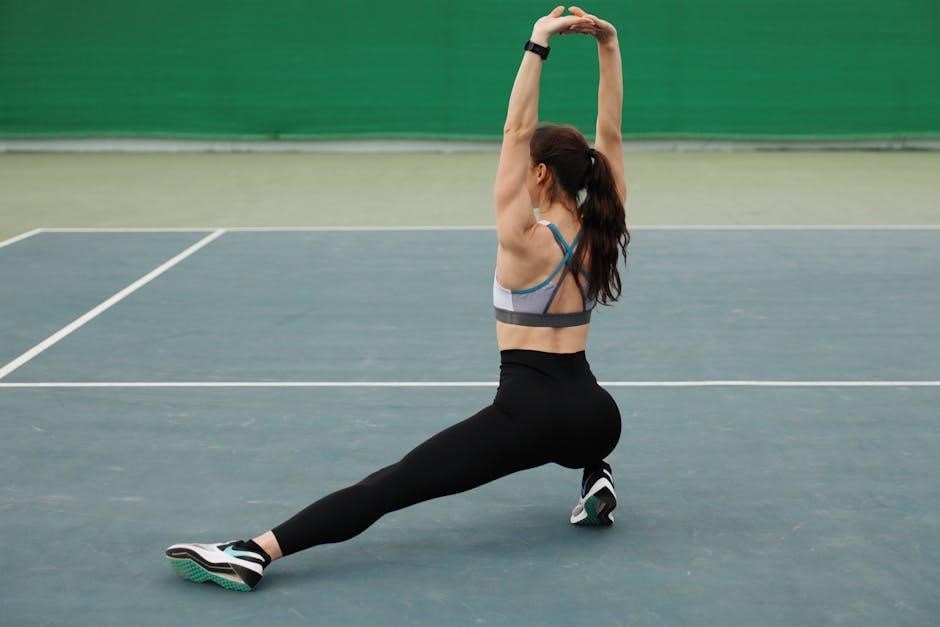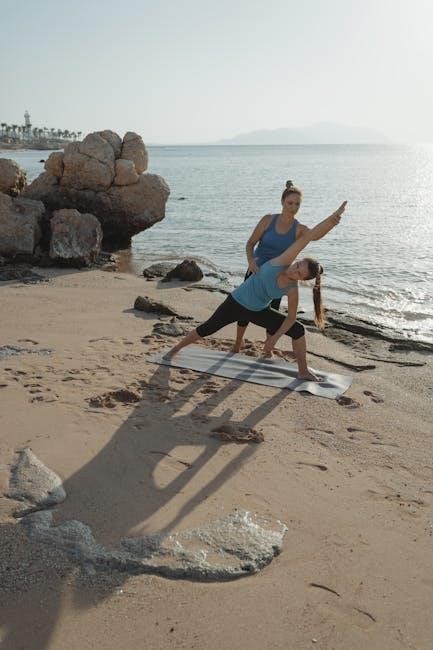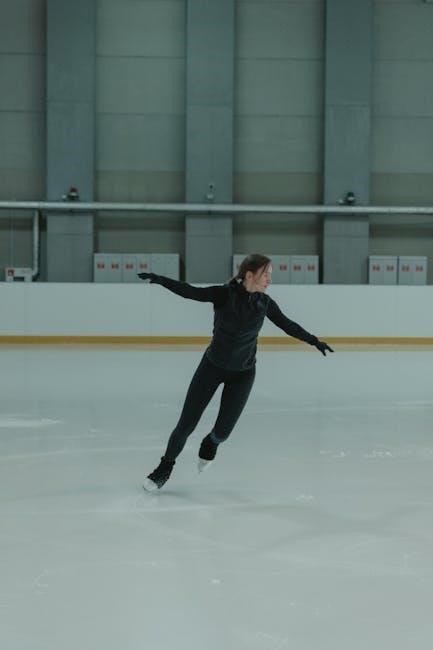
De Quervain’s Tenosynovitis is a condition affecting the tendon sheath on the thumb side of the wrist‚ causing pain and discomfort during thumb movements․
1․1 What is De Quervain’s Tenosynovitis?
De Quervain’s Tenosynovitis is a condition characterized by inflammation of the tendon sheath surrounding the tendons that control thumb movement․ Specifically‚ it affects the abductor pollicis longus and extensor pollicis brevis tendons‚ which run along the thumb side of the wrist․ The tendon sheath‚ or synovium‚ thickens and swells‚ restricting tendon movement and causing pain‚ especially during thumb extension or twisting motions․ This condition often leads to discomfort on the thumb side of the wrist‚ swelling‚ and limited mobility․ It is commonly associated with repetitive hand or thumb movements‚ overuse‚ or direct trauma to the area․ Accurate diagnosis is essential to differentiate it from other wrist conditions‚ such as arthritis or intersection syndrome․ Understanding this condition is crucial for effective management and rehabilitation․
1․2 Causes and Risk Factors
De Quervain’s Tenosynovitis is often caused by repetitive movements or overuse of the thumb and wrist‚ leading to inflammation of the tendon sheath․ Activities involving frequent gripping‚ twisting‚ or repetitive thumb motions‚ such as gaming‚ texting‚ or using vibrating tools‚ can contribute to its development․ Risk factors include prolonged or repetitive strain on the tendons‚ direct trauma to the wrist or thumb‚ and underlying inflammatory conditions like rheumatoid arthritis․ Pregnancy and hormonal changes may also increase susceptibility due to fluid retention and tendon swelling․ While the exact cause is sometimes unknown‚ these factors commonly predispose individuals to the condition․ Identifying and addressing these risks is crucial for prevention and effective management․
1․3 Symptoms and Diagnosis
Common symptoms of De Quervain’s Tenosynovitis include pain and swelling on the thumb side of the wrist‚ particularly during thumb movements or gripping․ Patients may experience tenderness along the tendon sheath and difficulty moving the thumb or wrist․ Diagnosis typically involves a physical examination‚ including the Finkelstein test‚ where the thumb is tucked into the palm and the wrist is bent‚ reproducing pain․ Imaging‚ such as ultrasound or MRI‚ may be used to confirm the condition․ Early identification of symptoms is crucial for effective management and preventing further inflammation․ A proper diagnosis ensures tailored treatment plans‚ often involving rest‚ ice‚ and targeted exercises to alleviate discomfort and restore function․

Importance of Exercises in Managing De Quervain’s Tenosynovitis
Exercises play a crucial role in managing De Quervain’s by reducing inflammation‚ improving tendon mobility‚ and strengthening the affected area‚ enabling consistent and controlled movement recovery․
2․1 Benefits of Exercise for De Quervain’s
Exercise is essential for managing De Quervain’s Tenosynovitis‚ as it helps reduce inflammation‚ improve tendon mobility‚ and strengthen the affected muscles․ Regular exercises can alleviate pain and discomfort‚ allowing for better functional use of the hand and wrist․ By incorporating isometric‚ stretching‚ and strengthening exercises‚ individuals can promote healing and prevent further injury․ These exercises also enhance flexibility and range of motion‚ making daily activities easier․ Consistent practice can reduce the need for surgical intervention and support long-term recovery․ Overall‚ exercises provide a non-invasive and effective approach to managing symptoms and restoring normal hand function․ They are often recommended as a first-line treatment alongside rest and ice therapy․
2․2 Role of Physical Therapy
Physical therapy plays a crucial role in managing De Quervain’s Tenosynovitis by providing personalized exercise programs tailored to the patient’s condition․ A therapist guides the patient through exercises to improve tendon mobility‚ reduce inflammation‚ and strengthen the muscles around the wrist and thumb․ Physical therapy also incorporates techniques like ice or heat therapy to alleviate pain and swelling․ Additionally‚ therapists educate patients on proper hand and wrist positioning to avoid aggravating the condition․ Regular sessions can accelerate recovery‚ restore functional movement‚ and prevent recurrence․ By addressing the root cause of the inflammation and promoting healing‚ physical therapy offers a comprehensive approach to managing symptoms and improving quality of life for individuals with De Quervain’s Tenosynovitis․

Types of Exercises for De Quervain’s Tenosynovitis
Exercises for De Quervain’s include isometric‚ stretching‚ strengthening‚ and joint mobility workouts to improve tendon health‚ reduce pain‚ and restore wrist and thumb functionality effectively․
3․1 Isometric Exercises
Isometric exercises are essential for managing De Quervain’s Tenosynovitis․ These exercises involve contracting the muscles without moving the joint‚ reducing strain on the tendons․ For example‚ wrist flexion exercises can be performed by resting the forearm on a flat surface‚ palm up‚ and resisting upward movement with the other hand․ Hold for 10 seconds‚ relax‚ and repeat 3 times per set․ Thumb flexion exercises can be done using a rubber band around the thumb‚ holding for 5-10 seconds‚ and repeating 10 times․ These exercises strengthen the muscles and improve tendon stability without causing further inflammation․ They are typically done several times a day and are a foundational part of the rehabilitation process․
3․2 Stretching Exercises
Stretching exercises are crucial for improving flexibility and reducing tightness in the tendons and muscles affected by De Quervain’s Tenosynovitis․ One effective stretch is the opposition stretch‚ where the thumb is gently stretched away from the palm․ To perform this‚ rest your hand on a flat surface‚ palm up‚ and use your other hand to guide your thumb toward your little finger․ Hold for 20-30 seconds and repeat 3-5 times․ Another beneficial stretch is the thumb rotation‚ where the thumb is rotated in a circular motion‚ first clockwise and then counterclockwise‚ for 5-10 repetitions․ These exercises help reduce stiffness and improve thumb mobility‚ promoting healing and preventing further inflammation․ Consistency is key to achieving lasting relief and restoring normal hand function․
3․3 Strengthening Exercises
Strengthening exercises are essential for rebuilding tendon and muscle strength around the wrist and thumb‚ helping to stabilize the joint and prevent further injury․ Thumb flexion with resistance‚ using a rubber band or small weight‚ is effective․ Place a rubber band around the thumb‚ hold the other end with the opposite hand‚ and flex the thumb slowly against resistance․ Hold for 5 seconds‚ then release․ Repeat 10-15 times‚ 2-3 sets daily․ Another exercise is thumb extension: lift the thumb away from the palm against resistance․ Start with light resistance and progress gradually․ Avoid pain during exercises; stop if discomfort occurs․ Consistency in these exercises helps restore normal thumb and wrist function‚ essential for daily activities․ Regular practice promotes healing and reduces recurrence risk․
3․4 Joint Mobility Exercises
Joint mobility exercises are designed to maintain or improve the range of motion in the wrist and thumb‚ reducing stiffness and promoting healing․ These exercises focus on gentle‚ controlled movements without resistance․ One effective exercise is the thumb opposition stretch: place your hand flat on a table‚ palm up‚ and gently touch the tip of your thumb to the tip of your little finger․ Hold for 5-10 seconds‚ then release․ Repeat 10-15 times‚ 2-3 sets daily․ Another exercise is thumb rotation: hold your hand flat‚ palm down‚ and rotate your thumb in a circular motion‚ first clockwise and then counterclockwise․ Perform 5-8 rotations in each direction․ These exercises help restore natural joint movement‚ essential for everyday activities․ Regular practice enhances flexibility and reduces the risk of stiffness‚ supporting overall recovery․

Specific Exercises for De Quervain’s Tenosynovitis
Specific exercises include wrist flexion‚ thumb flexion‚ opposition stretch‚ and thumb rotation to improve mobility and strength‚ reducing discomfort and promoting recovery․
4․1 Wrist Flexion: Isometric Exercise
The wrist flexion is an isometric exercise designed to strengthen the muscles of the forearm without joint movement․ To perform this exercise‚ sit or stand with your forearm resting on your thigh‚ palm facing upwards․ Use your other hand to gently resist upward movement of your hand‚ creating tension without moving your wrist․ Hold this position for 10 seconds‚ then relax․ Repeat 3 times per set and perform 1 set per session‚ ideally 1-2 times daily․ This exercise helps improve wrist stability and reduces strain on the tendons‚ promoting healing and preventing further inflammation․ It is essential to maintain controlled movements and avoid pain during the exercise․
4․2 Thumb Flexion: Resisted Exercise
Thumb flexion is a resisted exercise that targets the muscles of the thumb and forearm‚ aiding in strength and mobility․ To perform this exercise‚ place a rubber band around your thumb and hold the other end with your other hand․ Slowly bend your thumb toward your palm‚ applying gentle resistance with the rubber band․ Hold for 5-10 seconds‚ then gradually release․ Repeat this motion 10 times per set‚ completing 1-2 sets daily․ This exercise helps strengthen the tendons and muscles involved in thumb movement‚ improving grip strength and reducing discomfort․ It is important to maintain controlled movements and avoid overexertion to prevent further irritation of the tendon sheath․
4․3 Opposition Stretch
The opposition stretch is a gentle exercise designed to improve thumb mobility and reduce stiffness in the tendon sheath․ To perform this stretch‚ rest your hand on a flat surface with your palm facing up․ Slowly touch the tip of your thumb to the tip of your little finger‚ forming a light grip․ Hold this position for 6-8 seconds‚ then release․ Repeat this motion 10 times per session‚ completing 1-2 sessions daily․ This exercise helps restore the natural range of motion in the thumb and wrist‚ alleviating tightness associated with De Quervain’s Tenosynovitis․ It is important to perform the stretch with controlled movements and avoid forcing your thumb beyond a comfortable range to prevent further irritation․
4․4 Thumb Rotation and Extension
Thumb rotation and extension exercises are essential for improving mobility and reducing stiffness in the thumb and wrist․ Start by holding your hand in front of you with your palm facing down․ Gently rotate your thumb away from your palm‚ then return to the starting position․ Repeat this motion 10 times․ Next‚ extend your thumb upward as far as comfortable‚ holding for 5 seconds before lowering it․ Perform 3 sets of 10 repetitions․ These exercises help restore the thumb’s range of motion and strengthen the tendons‚ reducing the symptoms of De Quervain’s Tenosynovitis․ Consistent practice improves flexibility and reduces discomfort during daily activities․

Creating a De Quervain’s Tenosynovitis Exercise PDF Guide
A well-structured PDF guide should include clear exercise instructions‚ visuals‚ and progression plans to help users manage symptoms effectively and safely from home․
5․1 Structure and Content of the PDF
A comprehensive De Quervain’s Tenosynovitis exercise PDF guide should include a clear introduction‚ detailed exercise descriptions‚ and visual aids․ The structure should begin with an overview of the condition‚ followed by sections dedicated to isometric‚ stretching‚ strengthening‚ and joint mobility exercises․ Each exercise should be accompanied by step-by-step instructions‚ diagrams‚ or images to ensure proper form․ The guide should also emphasize safety tips‚ such as avoiding pain during exercises and progression guidelines․ Including a section on tracking progress can help users monitor their improvement․ The content should be concise‚ easy to understand‚ and tailored for individuals to manage their symptoms effectively at home․ This organized approach ensures users can follow the exercises confidently and safely․
5․2 Including Visual Aids and Instructions

Visual aids and clear instructions are essential for an effective De Quervain’s Tenosynovitis exercise PDF guide․ High-quality images‚ diagrams‚ and videos can demonstrate proper exercise techniques‚ ensuring users perform movements safely and correctly․ Step-by-step instructions should detail starting positions‚ movements‚ and repetitions‚ while highlighting key points like breathing and posture․ Visual cues‚ such as arrows or highlighted areas‚ can emphasize specific muscle groups or ranges of motion․ Including safety tips‚ like avoiding pain during exercises‚ is crucial․ The instructions should also guide users on modifying exercises based on their progress or discomfort․ Clear visuals and concise instructions empower users to follow the program confidently‚ maximizing the benefits of their rehabilitation journey and promoting long-term recovery․ Properly illustrated exercises ensure accuracy and adherence to therapeutic guidelines․
5․3 Progression of Exercises
A well-structured De Quervain’s Tenosynovitis exercise PDF guide should include a clear progression plan to ensure safe and effective rehabilitation․ Begin with gentle isometric exercises to strengthen the thumb and wrist without movement․ Gradually introduce stretching exercises to improve flexibility and range of motion․ As symptoms improve‚ incorporate strengthening exercises with light resistance‚ such as using rubber bands or light weights․ Finally‚ add joint mobility exercises to restore normal wrist and thumb function․ Progression should be based on pain levels and strength gains‚ with exercises becoming more challenging over time․ It’s important to avoid rushing through stages‚ as this could worsen symptoms․ Consistency and patience are key to achieving long-term recovery and preventing recurrence of the condition․
De Quervain’s Tenosynovitis exercises are essential for recovery‚ reducing pain‚ and restoring wrist and thumb function․ Consistent practice and professional guidance ensure effective management and long-term relief․

6․1 Summary of Key Points
De Quervain’s Tenosynovitis is a condition affecting the tendon sheath on the thumb side of the wrist‚ causing pain and discomfort during thumb movements․ Exercises play a crucial role in managing symptoms by improving tendon mobility‚ reducing inflammation‚ and strengthening the affected area․ Isometric‚ stretching‚ and strengthening exercises are essential for recovery‚ promoting proper healing and restoring functionality․ Consistent practice‚ combined with rest and ice therapy‚ can significantly alleviate discomfort․ A structured exercise routine‚ guided by a healthcare professional‚ ensures safe and effective progress․ By adhering to these practices‚ individuals can regain wrist and thumb mobility‚ reducing the risk of long-term complications․ Early intervention and proper exercise techniques are vital for optimal outcomes․
6․2 Encouragement for Consistent Practice
Consistent practice of the recommended exercises is crucial for managing De Quervain’s Tenosynovitis effectively․ Regular adherence to the routine helps reduce inflammation‚ improve tendon mobility‚ and strengthen the wrist and thumb․ Even small‚ daily efforts can lead to significant progress over time․ Patients are encouraged to stay committed‚ as stopping too early may result in relapse․ Setting aside a specific time each day for exercises and using reminders can help maintain consistency․ Celebrating small milestones‚ like increased range of motion or reduced pain‚ can motivate continued effort․ Remember‚ recovery is a gradual process‚ and persistence is key to achieving long-term relief and restoring normal hand function․